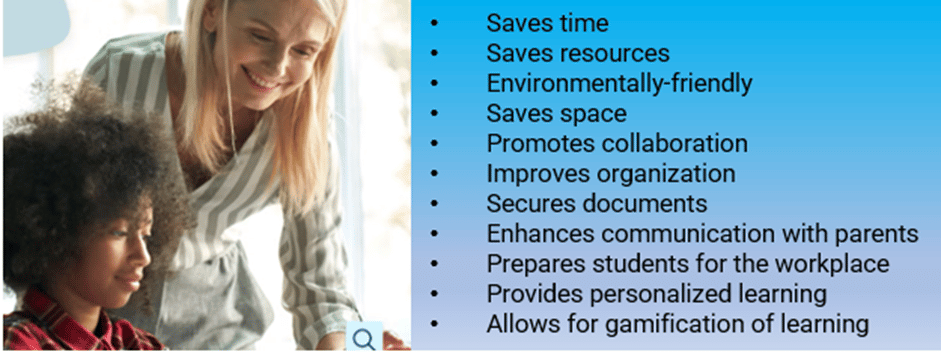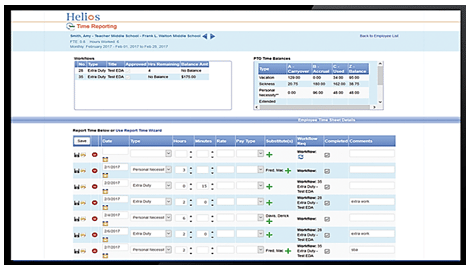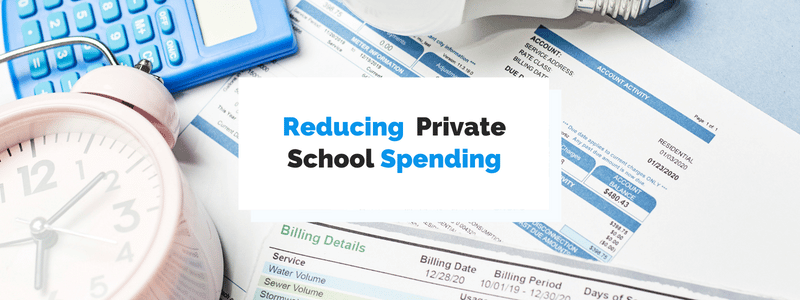The ongoing inflation and the still-lurking pandemic continue to weigh heavily on the finances of private schools across the U.S.
Considering that many of them operated on thin financial margins and relied on fundraisers to supplement their budget even before the pandemic and the subsequent inflation hit, private schools now find themselves having to reduce their spending.
Of course, they need to do that without compromising the quality of education and other services they provide to students.
Against this backdrop, here are the four best practices that school principals and administrators can utilize to minimize expenses.
- Have Your School Go Paperless
- Reduce Your School’s Waste
- Take Action to Reduce Your Utility Bills
- Manage Your School’s Inventory Better
- Conclusion
Have Your School Go Paperless
Although investing in new technology to go paperless may seem counterintuitive when you’re trying to cut down on spending, your school should definitely consider it in light of all the savings and other benefits it can generate.
For starters, let’s point out that paperless classrooms are quickly becoming standard, which was made possible by affordable digital technology and accelerated by remote classes during the pandemic.
In fact, digital learning not only saves money on paper and printing costs, but it has also been shown to improve students’ learning outcomes by enhancing their engagement, communication, motivation, and creativity.
Considering the increasingly digital nature of the world around us, that’s not surprising.
Here are just some other advantages of a paperless classroom, courtesy of Lumin.

Source: Lumin
Having highlighted how beneficial it is for students, it should be noted that all but the last three points can also significantly reduce school administration costs.
For instance, countless papers no longer need to be printed, copied, and stored, thus generating even more savings in terms of paper, ink, printers, and storage space, as well as operational improvements.
In other words, various school management software solutions allow schools to digitize previously manual and paper-based admin processes like employee onboarding, form signatures and approvals, timesheets, evaluations, and reporting.
Out of seemingly countless software options, here’s an example of one that focuses on making processes paperless, HeliosEd.

Source: HeliosEd
For instance, by using this software’s different modules, schools can store a large amount of information in digital form, thus opening the door for paper-free school administration.
They even have a 1-minute savings calculator that will help you assess what savings your school can expect from going paperless and streamlining its processes.
Source: HeliosEd
Of course, choosing the right school management software, whether free or paid, will depend on software solutions your school is probably already using, paper processes you want to digitize, and many other factors.
Therefore, it’s definitely recommended to do a thorough assessment of your school’s needs and research the best solution based on those needs.
If your school already uses some kind of education management software, you might consider further digitizing some aspects that are still paper-based.
For instance, Regpack allows your school to ditch papers by using a registration and payment solution for enrolling students, collecting tuition, managing after-school programs, and handling fundraisers.
Source: Regpack
As you can see, Regpack will digitize and automate your registration and payment processes, so they can be done online directly from your website, thus contributing to most of the abovementioned benefits of going paperless.
Overall, private schools should utilize digital technology and go paperless not only to cut their spending on paper and related costs, but also to improve their students’ learning outcomes and streamline their admin processes.
Reduce Your School’s Waste
It goes without saying that schools can generate a lot of waste, which is bad for the environment as well as their budgets.
Therefore, private schools should apply the 3R principle to reduce, reuse, and recycle various types of waste produced in their facilities, such as food, paper and cardboard, and plastic waste.
A study by the Minnesota Pollution Control Agency (MPCA) showed that their K-12 public schools generate 483,520 pounds of waste per day, 23.9% of which was food waste, while 23.5% was paper waste.
Moreover, when the discarded food and paper were excluded, the study found that 70% of all other waste generated by schools pertained to disposable plastics, mostly from school cafeterias (flatware, bowls, bags, and wrappers).
So, considering that all these scrapped items had first to be purchased by schools and that waste hauling also comes at a cost, what can schools do to reduce their waste?
As said above, you, the faculty, other staff, and students should:
Source: GreenSchoolsIreland
In other words, to cut their expenses, schools should first consider what items they keep buying, only for them to end up as trash, like disposable plastic utensils.
For instance, the abovementioned MPCA gave grants to two schools to replace their flatware and bowls with reusable alternatives, and, as a result, those schools saved $23,000 over three years (water consumption for dishwashing went up far less than expected).
Moreover, when it comes to reusing some paper, cardboard, plastic waste, and many other items that would usually be thrown away can be repurposed for science or art projects instead.
For example, students could make sculptures from those materials.
Likewise, making double-sided copies can also generate savings when something has to be printed.
When it comes to recycling, schools should look for opportunities to earn a little from their waste, and such opportunities are plentiful in this day and age.
For example, schools can make some cash through state-funded bottle bills for waste plastic bottles and containers and companies that pay for electronic waste, textiles, scrap metal, and even non-recyclable items, like TerraCycle:
Source: TerraCycle
Of course, all these efforts to reduce, reuse, and recycle school waste will require good planning, getting students involved, and running awareness-raising campaigns.
Finally, reducing your school’s waste is not only environmentally responsible but can help your school cut its spending and earn some money.
Take Action to Reduce Your Utility Bills
As energy prices go up, so do utility bills. Therefore, schools should take action to increase their energy efficiency by employing some immediate and some longer-term solutions.
The actions we’ll mention can reduce your school’s utility bills and encourage students to join in and make further energy savings (and also reduce waste, as discussed above).
First, it should be noted that typical school buildings spend most energy (and thus money) on lighting, space heating and cooling, and water heating, so it makes sense to focus your school’s energy-saving efforts on those areas.
Quick fixes for reducing your school’s utility bills can range from turning off lights when classrooms and other spaces are not used or have sufficient daylight, to turning down heating after school hours or over weekends.
Here are those and some additional common sense tips, courtesy of GreenMatch:
Source: GreenMatch
Of course, there are other simple measures your school can take, including involving students as energy-efficiency monitors or making it a school-wide project.
As for longer-term measures, when switching to LED bulbs is combined with installing solar panels on the school’s roof or premises, that can reduce your school’s electricity bills by more than 50%, as shown in the video below.
Source: Performance Services on YouTube
Since renewable energy sources are very much in focus, make sure to check whether your state/county/city provides grants or subsidies, or whether private companies offer no-interest loans for switching your school to solar power.
In fact, over 8400 schools across the U.S. have already taken advantage of such options or self-funded solar panels since such systems can pay off in a few years, as cited in an article by The New York Times.
Source: New York Times
In addition, utility bills can be reduced by replacing older cooling systems with new units, as the most efficient models today can have 52% better performance than standard ones.
Therefore, combining immediate school-wide actions and smart longer-term investments can significantly lower your school’s utility bills while giving students inspirational learning and participation opportunities.
Manage Your School’s Inventory Better
If your school wants to cut expenses, it should take better care of its vast inventory, regardless of whether it’s used by students or staff.
The school inventory list is almost endless, so we’ll give just a few examples:
- IT equipment (laptops, tablets, desktops, webcams, projectors, etc.)
- furniture (student and staff desks and chairs, etc.)
- printed textbooks, books, uniforms, lab equipment, classroom supplies, etc.
- other items like nurse’s station supplies, fire extinguishers, replacement parts, etc.
In light of the above, schools should first optimize inventory planning, procurement, and distribution to reduce wasteful practices and cut inventory spending.
However, since there are many more students than faculty and other school staff, the main challenge when trying to reduce expenses is ensuring that all the above items are well-maintained and are not lost or stolen.
For that purpose, schools should consider investing in simple and affordable inventory management software that allows them to track the location, usage, and maintenance of their inventory and assets, like GoCodes.
Source: GoCodes
This mobile app comes with customized QR code labels and tags that are then affixed to all items that need to be tracked.
When scanned by scanner apps on smartphones and other compatible devices, the GoCodes app will provide detailed information about the item to the user and also update the administrator’s digital inventory database.
As a result, the administrator(s) responsible for inventory management can keep track of the school inventory at all times, use the system to check items in and out, monitor usage and maintenance, and create inventory reports.
Finally, this or other similar software will improve your school’s inventory management processes, thus enabling savings through timely maintenance and lower risk of loss or theft, which translates into reduced spending (and more time for your school staff).
Conclusion
The key takeaway?
To reduce spending, your school should apply these best practices, namely digitizing classrooms and administrative processes to go paperless, reducing all types of waste, finding ways to save on utility bills, and improving inventory management.
When properly planned and implemented with the help of the right digital solutions, they can generate savings across the board and enhance the quality of education your school provides.
Why?
Because these four practices can be used to improve the students’ academic performance and environmental awareness while enabling your staff to work more efficiently.

